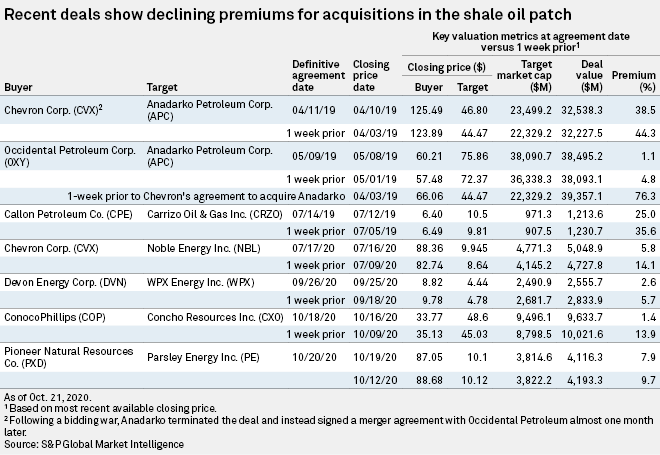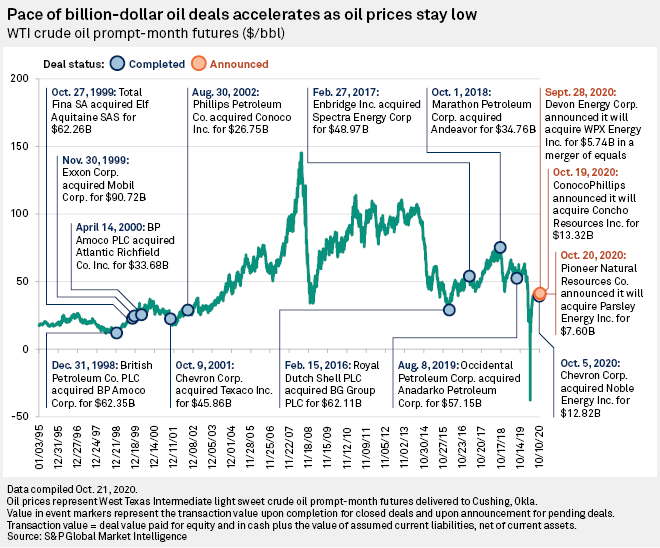Driven by low crude oil prices, U.S. independent shale oil drillers are consolidating at an increasingly rapid rate while the premium that buyers are paying for those acquisitions is declining, recent deal announcements show.
With U.S. crude oil prices stuck near $40 per barrel, smaller independents are in a life or death struggle where only a takeover keeps them alive. "Investors are not paying for longer-term resource upside," Mizuho Securities USA LLC Vice President Vince Lovaglio said Oct. 21. "We believe the recent trend of consolidation is indicative that oil managements are aware of investor concerns and not confident in higher prices either."
"Consolidation is a tough but likely necessary step in the right direction," Mizuho said, noting that it is a quick way to lower costs and increase free cash flow as independent oil producers designed for $60/b oil are forced to operate in a $40/b world.

Independent oil producers with market capitalizations below $10 billion will not remain independent at current and forecast prices, Permian Basin driller Pioneer Natural Resources Co. President, CEO and director Scott Sheffield told analysts on an Oct. 20 conference call to discuss Pioneer's deal to acquire Permian neighbor Parsley Energy. "It seems like the best companies have been picked off in the last few weeks with Parsley and [Concho Resources Inc.] and the other transactions."
"I just think that there's only going to be three or four, really, survivors," Sheffield said. "That's going to be probably, most likely ConocoPhillips, [EOG Resources Inc.] and Pioneer, and maybe [Hess Corp.] long term."
However, the boom-and-bust cycle of the oil market — and subsequent consolidation within the industry — is nothing new.
"The main problem in global oil markets has been excess U.S. supply at sub-economic returns," veteran oil analyst Paul Sankey of Sankey Research said Oct. 20 before the Pioneer-Parsley deal was announced. "The consolidation of the U.S. [exploration and production] industry, through mergers and bankruptcies, is underlining the cyclical nature of oil. Low prices will cure low prices. When demand returns, so will excess returns."




